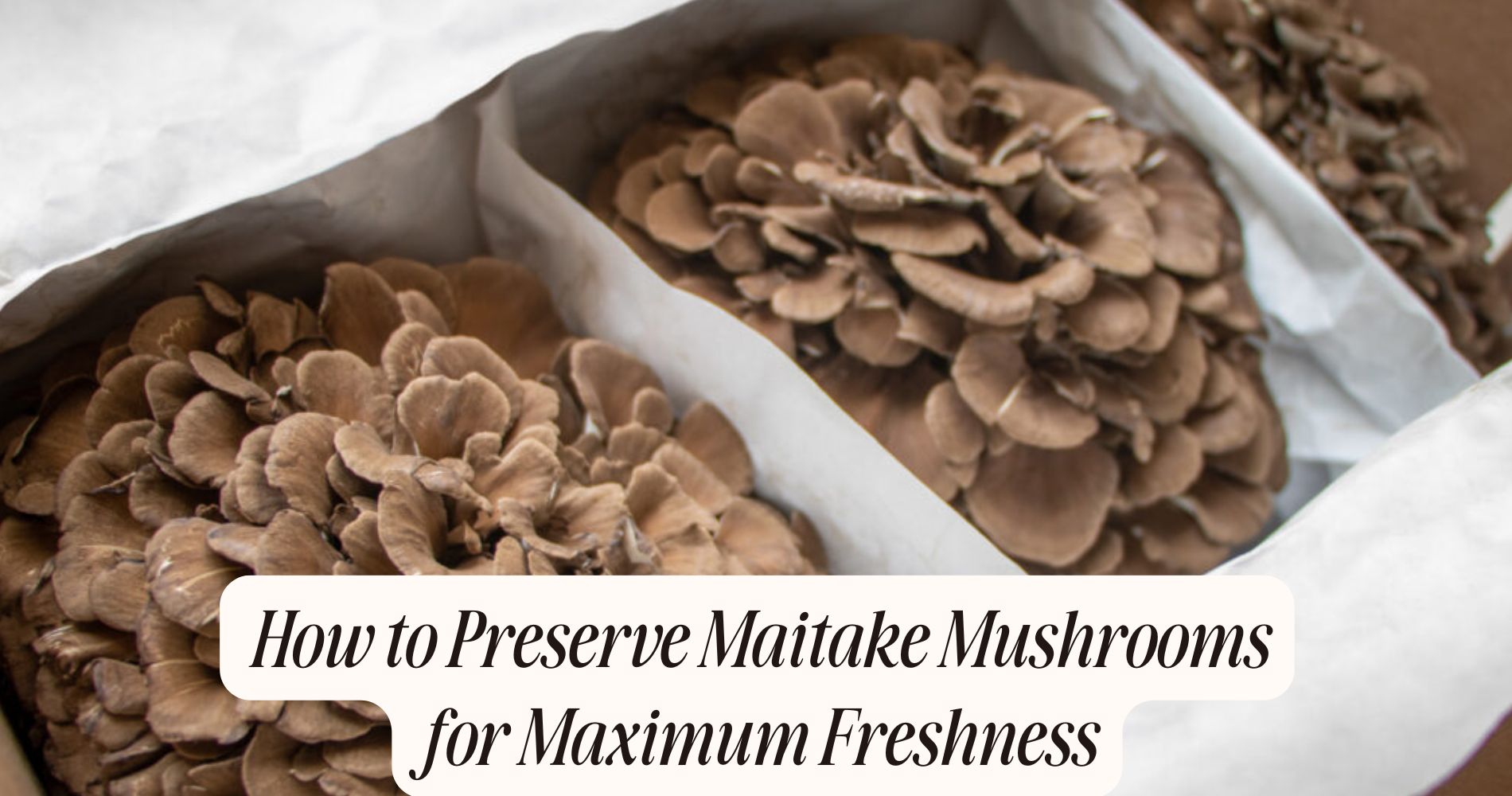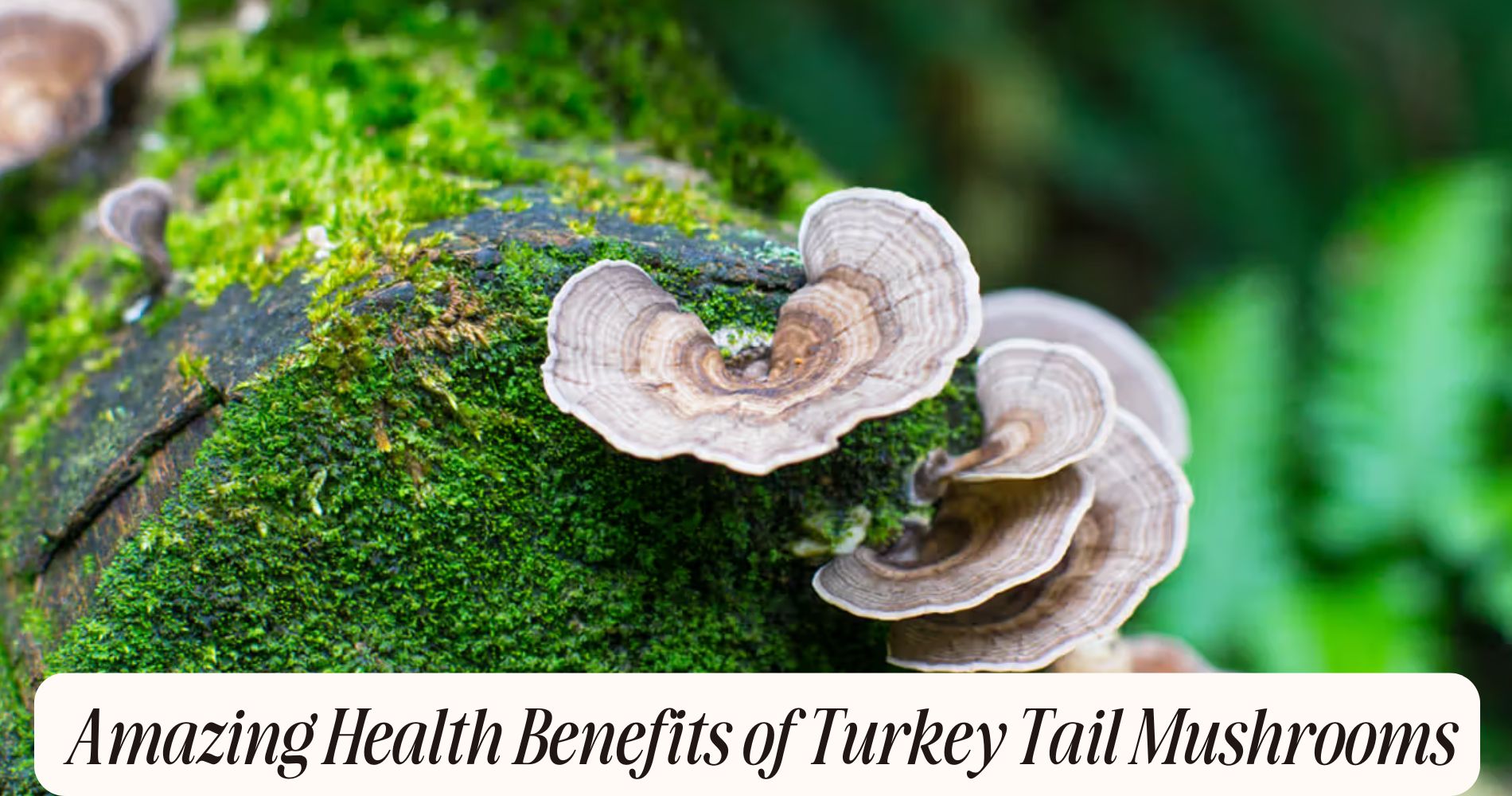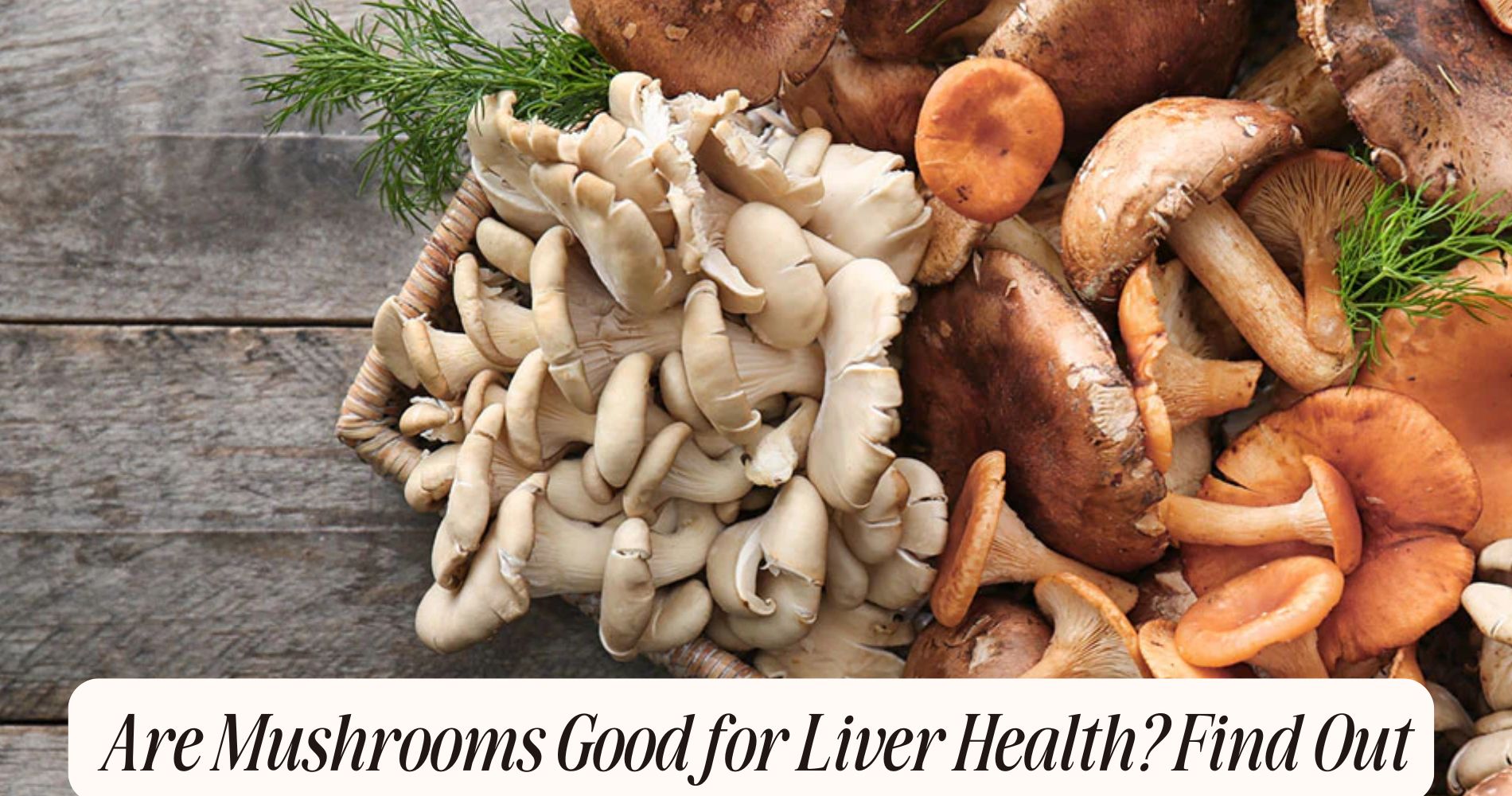
How to Preserve Maitake Mushrooms for Maximum Freshness
How to preserve maitake mushrooms? To preserve maitake mushrooms for maximum freshness, store them in breathable containers like paper bags or cardboard boxes in your refrigerator's crisper drawer, ideally between 32°F and 36°F (0°C to 2°C). Keep them away from strong odors and regularly check for spoilage. For long-term storage, you can freeze them by cleaning, slicing, and blanching before placing them in airtight containers. Alternatively, dehydrating concentrates their flavor, while pickling enhances taste and extends shelf life. Monitor their freshness by checking for vibrant color and firm texture. There's more you can explore about these methods to keep your mushrooms delicious.
Understanding Maitake Mushrooms
Maitake mushrooms, also known as "Hen of the Woods," are a unique and flavorful variety prized for both their culinary and medicinal properties.
You'll find their rich, earthy taste enhances a variety of dishes, making them a favorite among chefs and home cooks alike. Their culinary versatility allows you to use them in soups, stir-fries, and even as a main ingredient in vegetarian dishes, showcasing their ability to absorb flavors and add depth to meals.
Beyond their culinary appeal, maitake mushrooms offer numerous health benefits. They're known to boost the immune system, support weight management, and provide anti-inflammatory properties.

By incorporating maitake into your diet, you're not only enjoying a delicious ingredient but also promoting your overall well-being.
When you consider their robust flavor profile and health advantages, it's clear why maitake mushrooms have become increasingly popular.
As you explore various recipes and preparation methods, you'll appreciate how these mushrooms can elevate your cooking while contributing to a healthier lifestyle.
Embracing their culinary versatility and health benefits can transform your meals and enrich your diet.
Best Storage Practices
To enjoy the full flavor and health benefits of maitake mushrooms, proper storage is key.
First, consider using the best containers for storage. Opt for breathable options like paper bags or cardboard boxes, as these allow moisture to escape, preventing sogginess. Avoid plastic bags, which trap humidity and can lead to spoilage.
Next, pay attention to the ideal temperatures for storing your maitake mushrooms. They thrive in cool environments, ideally between 32°F and 36°F (0°C to 2°C). If you have a dedicated crisper drawer in your refrigerator, that's a perfect spot. Make sure the mushrooms are dry before storage; excess moisture can cause them to deteriorate faster.
Additionally, keep your maitake mushrooms away from strong odors, as they can easily absorb them. Store them separately from other fruits and vegetables to maintain their unique flavor and aroma.
If you notice any signs of spoilage, like discoloration or a slimy texture, discard those mushrooms immediately.
Refrigeration Techniques
When it comes to preserving the quality of maitake mushrooms, mastering refrigeration techniques is essential. Proper refrigeration not only extends their shelf life but also maintains their texture and flavor. To achieve this, you should aim to store your maitake mushrooms at ideal temperatures, ideally between 32°F and 36°F (0°C to 2°C). This range helps slow down the growth of bacteria and mold, which can spoil the mushrooms.
Start by placing unwashed maitake mushrooms in a paper bag or a breathable container. Avoid plastic bags, as they trap moisture, leading to spoilage. The paper bag helps absorb excess moisture while allowing air circulation.

If you're dealing with larger quantities, consider using a crisper drawer in your refrigerator, which typically offers slightly higher humidity, perfect for mushrooms.
It's also important to regularly check your mushrooms for any signs of deterioration. If you spot any slimy or discolored pieces, remove them promptly to prevent them from affecting the rest.
Freezing Maitake Mushrooms
When you're ready to freeze maitake mushrooms, proper preparation is key to maintaining their flavor and texture.
Start by cleaning and slicing the mushrooms, ensuring they're dry to prevent ice crystals from forming.
Next, using effective freezing techniques will help preserve their quality for future use.
Preparation Before Freezing
Preparing maitake mushrooms for freezing requires careful attention to detail to guarantee their texture and flavor are preserved.
Start by using effective cleaning techniques to remove any dirt or debris. Rinse the mushrooms gently under cold water, taking care not to soak them, as excess moisture can lead to freezer burn. A soft brush can help dislodge stubborn dirt without damaging the delicate caps.
Once clean, focus on your cutting methods. Trim away any tough stems and slice or tear the mushrooms into uniform pieces. This uniformity guarantees even freezing and makes it easier to use them later in dishes. If you plan to use the mushrooms in soups or stir-fries, consider cutting them into smaller pieces, while larger chunks work well for roasting.
After cleaning and cutting, blot the mushrooms dry with a paper towel to remove excess moisture. This step is essential, as it can drastically affect the quality of the mushrooms once thawed.
With these preparation steps complete, your maitake mushrooms will be ready for freezing, ensuring they maintain their delicious flavor and texture for future meals.
Proper Freezing Techniques
Freezing maitake mushrooms effectively is crucial for maintaining their quality and preventing freezer burn. Start by confirming your mushrooms are properly cleaned and prepped. Slice or separate them into manageable portions.
Next, blanch the mushrooms for about 2-3 minutes in boiling water, then shock them in an ice bath. This process helps preserve texture and flavor.
Once cooled, it's time to package them. Using vacuum sealing is one of the best methods to guarantee freshness. By removing air, you greatly reduce the risk of freezer burn and maintain the mushrooms' quality.

If you don't have a vacuum sealer, use high-quality freezing containers with airtight lids. Make sure to remove as much air as possible before sealing.
Label your containers with the date and contents to keep track of freshness. For best results, store your maitake mushrooms at 0°F (-18°C) or lower. This guarantees they retain their flavor and nutritional value.
When you're ready to use them, avoid thawing at room temperature; instead, cook them directly from frozen for peak taste and texture. Following these techniques will help you enjoy delicious maitake mushrooms long after harvest.
Dehydrating for Long-Term Use
Dehydrating Maitake mushrooms is an effective method for preserving their rich flavor and nutritional value for long-term use. This process reduces moisture content, which inhibits the growth of bacteria and fungi, allowing you to store them for months or even years.
There are several dehydration methods, including air drying, using a food dehydrator, or an oven. Each method has its advantages, but a food dehydrator is often the most efficient and guarantees even drying.
To maximize flavor retention, clean your mushrooms thoroughly, and slice them into uniform pieces to guarantee consistent drying. If you're using an oven, set it to the lowest temperature to prevent cooking the mushrooms.
Monitor the drying process closely; they should be brittle but not burnt. Once dried, store your Maitake mushrooms in airtight containers, away from light and moisture.
Pickling Maitake Mushrooms
Pickling Maitake mushrooms provides a flavorful and tangy way to enjoy their unique taste while extending their shelf life. This method not only preserves the mushrooms but also enhances their flavor, making them a delicious addition to salads, sandwiches, or as a standalone snack.
To start pickling, select fresh Maitake mushrooms and clean them thoroughly. You can choose from various pickling techniques, such as quick pickling or traditional canning. Quick pickling involves soaking the mushrooms in a vinegar solution for a few hours, while traditional canning requires sterilizing jars and processing them in a water bath for longer preservation.
For the pickling brine, combine vinegar, water, salt, and sugar, adjusting the ratios based on your taste preference. Adding spices like garlic, dill, or peppercorns can further enhance the flavor profile.
Once the mushrooms are submerged in the brine, let them sit for at least 24 hours to develop their tangy taste.
Cooking and Preserving
After enjoying your pickled Maitake mushrooms, you might want to explore other methods for cooking and preserving them to maximize their culinary potential.
Cooking Maitake mushrooms enhances their rich, earthy flavor while retaining valuable mushroom nutrition, including vitamins D and B, minerals, and antioxidants. Sautéing or stir-frying are excellent options, allowing you to incorporate them into a variety of dishes.

Consider pairing Maitake with complementary ingredients. They work beautifully with garlic, shallots, and herbs like thyme or parsley, creating a depth of flavor that elevates your meals. You can also blend them into soups or risottos for added texture and nutrition.
For preservation, freezing is a practical choice. Clean and slice your mushrooms, then sauté them lightly before cooling and placing them in airtight containers. This method preserves both flavor and nutritional content while making it easy to incorporate them into future meals.
Dehydrating is another effective preserving technique; it concentrates their flavor and allows for long-term storage.
Signs of Freshness
When you're selecting Maitake mushrooms, it's crucial to look for specific signs of freshness to guarantee you're getting the best quality. Freshness indicators include appearance, texture, and aroma.
Start by examining the caps; they should have a vibrant, rich color without any dark spots or bruises. A healthy Maitake should also be firm and plump, indicating moisture retention. If the mushrooms feel slimy or overly dry, they're likely past their prime.
Next, consider the gills. They should be intact and not overly dark or decayed, as this can signify age. A fresh Maitake has a strong, earthy aroma, while any off or sour smell suggests spoilage.
Lastly, perform a quality assessment by checking for any signs of mold, which can compromise your mushrooms. If you notice any fuzzy patches, it's best to avoid those specimens.
Creative Uses for Preserved Mushrooms
Once you've preserved Maitake mushrooms, their versatility in the kitchen opens up a world of culinary possibilities. You can incorporate these mushrooms into various mushroom recipes that enhance both taste and texture. For instance, add them to risottos or pasta dishes, where their earthy flavor infusions elevate the entire meal.
Another creative use is blending preserved Maitake into soups and stews. Their concentrated flavor can boost the umami profile, giving your dishes a rich depth. You might also consider rehydrating the mushrooms and using them in stir-fries or grain bowls, where they can contribute both substance and flavor.
Experimenting with preserved Maitake can lead to innovative appetizers too. Try mixing them into spreads or dips, where their unique taste can surprise your guests. Alternatively, use them as a topping for pizzas or bruschetta, providing an unexpected yet delightful twist.
Don't forget about incorporating them into omelets or savory pancakes, offering a breakfast option that's both nutritious and flavorful.
Enjoy the Benefits of Mushrooms Anytime with SUPER MUSHROOM GUMMIES
If you're exploring "How to preserve maitake mushrooms" but want a simpler way to enjoy mushroom benefits, Well Gummies' SUPER MUSHROOM GUMMIES are the perfect solution. Each vegan gummy combines 10 functional mushroom types, including maitake, to deliver immune support, enhanced focus, and steady energy. With a fresh wild berry flavor, these gummies are convenient, delicious, and shelf-stable—no need for special preservation methods. Skip the hassle of storage and enjoy the health-boosting power of mushrooms with SUPER MUSHROOM GUMMIES!
Frequently Asked Questions
Can I Preserve Dried Maitake Mushrooms in Airtight Containers?
Yes, storing dried maitake mushrooms in airtight containers is effective. It prevents moisture absorption and preserves flavor. The benefits of airtight container storage include extended shelf life and maintaining the mushrooms' quality for future use.
How Long Do Pickled Maitake Mushrooms Last in the Fridge?
Pickled maitake mushrooms can last up to two months in the fridge when stored properly. Follow storage tips like using airtight containers and ensuring the pickling process is done correctly to maintain their flavor and texture.
Are There Specific Recipes for Using Preserved Maitake Mushrooms?
Yes, you can use preserved maitake mushrooms in various recipes. Try adding them to maitake soup for depth or incorporate them into mushroom risotto for a rich, earthy flavor that enhances your dish's overall profile.
Can I Use Frozen Maitake Mushrooms Directly in Recipes?
Yes, you can use frozen maitake mushrooms directly in recipes. Just remember to adjust your cooking times and techniques as needed. Proper freezing techniques help maintain texture, so recipe adaptations may enhance your dish's overall quality.
What Are the Nutritional Benefits of Maitake Mushrooms When Preserved?
When preserved, maitake mushrooms maintain their nutrient density, offering numerous health benefits. You'll find them rich in antioxidants, vitamins, and minerals, which support immune function and may help manage cholesterol and blood sugar levels effectively.
Conclusion
To sum up, preserving maitake mushrooms effectively hinges on your chosen method, whether refrigeration, freezing, dehydrating, or pickling. Each technique offers unique benefits, ensuring you can enjoy their rich flavor and nutritional value long after harvesting. By recognizing signs of freshness and employing best practices, you maximize their shelf life and culinary potential. With these strategies, you can creatively incorporate preserved maitake mushrooms into your dishes, enhancing both taste and health benefits in your meals.




